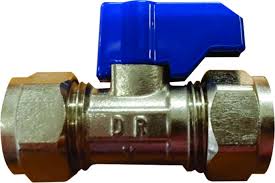Your basket is currently empty!

SayPro Marketing Daily Pricing Strategies Training Course
R3 999,00
Description
1. Introduction to Competitive Pricing Strategies
Objective:
By the end of this section, students will understand the importance of competitive pricing in tenders and the foundational concepts of pricing strategies.
Key Concepts:
- Pricing:The process of determining what a company will receive in exchange for its products or services.
- Tendering:The formal process through which companies bid for contracts by submitting pricing and proposals to potential clients.
- Competitive Pricing:Setting the price of a product or service based on what competitors are charging for similar offerings.
Importance of Competitive Pricing in Tenders:
- Ensures your bid is attractive to potential clients without sacrificing profitability.
- Helps you navigate competitive markets and secure contracts.
- Balances quality, cost, and value, positioning your business as a top choice.
Key Terms to Know:
- Bid Price: The price at which you offer to sell your goods or services in a tender.
- Market Positioning: How your offering compares in terms of pricing, quality, and features in the marketplace.
- Value Proposition: The unique benefits or features that justify your pricing.
Task:
- List three key factors you believe influence pricing decisions in tenders. Share these factors with your peers and compare their responses.
Quiz:
- What is competitive pricing in the context of tenders?
- a) Pricing based solely on production costs
- b) Pricing based on competitor pricing
- c) Pricing that maximizes profit margins
- d) Pricing based on customer feedback
- Why is competitive pricing important when bidding for tenders?
- a) It guarantees contract success
- b) It ensures you maintain profit margins while winning the contract
- c) It increases production costs
- d) None of the above
- Define “value proposition” in pricing terms.
- a) The cost of producing a good or service
- b) The unique benefits that justify the price of your offering
- c) The competition’s price point
- d) A fixed price you always offer
2. Understanding Tender Requirements and Market Context
Objective:
Students will learn how to analyze tender specifications, market conditions, and competitors to set a competitive and effective price.
Analyzing Tender Specifications and Conditions:
- Tender Document Review:Always start by thoroughly reading the tender documents to understand the buyer’s needs, scope of work, and constraints.
- Quantifying Deliverables:Ensure you understand the required goods or services, deadlines, and any specific quality standards or certifications.
- Payment Terms:Understand the buyer’s payment schedule and any possible penalties or incentives for early or late completion.
Market Dynamics and Competition:
- Research competitors’ previous bids and how they are positioned in the market.
- Analyze market trends such as demand fluctuations, regulatory changes, and technological innovations.
- Pay attention to regional or industry-specific pricing norms.
Buyer Needs and Budget Constraints:
- Identify budget limits that the buyer may have. Are they looking for the lowest price or the best value for money?
- Anticipate potential buyer objections or negotiations related to price.
Task:
- Review a sample tender document (provided in the course materials) and list at least three specific conditions or requirements that may affect your pricing strategy.
Quiz:
- What should you first focus on when reviewing a tender document?
- a) Payment terms
- b) Scope of work and specifications
- c) Competitor analysis
- d) Market conditions
- Why is understanding the buyer’s budget constraints important when setting a price?
- a) To offer a lower price than competitors
- b) To ensure your price meets their budget and expectations
- c) To maximize your profit margin
- d) All of the above
- Which of the following can influence pricing decisions in a tender?
- a) Market trends
- b) Competitor pricing strategies
- c) Buyer’s financial constraints
- d) All of the above
3. Types of Pricing Strategies
Objective:
By the end of this section, students will be able to identify and apply different types of pricing strategies based on the nature of the tender.
Common Pricing Strategies in Tenders:
- Cost-Plus Pricing:
- Pricing is determined by adding a fixed markup percentage to the cost of production.
- Suitable when cost structures are well defined, and you want to ensure profitability.
- Value-Based Pricing:
- Pricing is set based on the perceived value to the customer rather than the cost of production.
- Often used when your product or service offers significant advantages or differentiation.
- Penetration Pricing:
- Set a lower price to enter a competitive market and increase market share.
- Often used in new markets or for new product launches.
- Skimming Pricing:
- Set a high price initially, targeting customers willing to pay a premium for early access or exclusivity.
- Often used for innovative or high-demand products.
- Competitive Matching:
- Pricing is set in line with or slightly lower than competitors’ prices.
- Often used in highly competitive markets with little differentiation.
Task:
- Choose one pricing strategy you think would be most effective for a tender you’re familiar with and explain why. Provide an example scenario for context.
Quiz:
- Which pricing strategy adds a markup percentage to the cost of production?
- a) Cost-Plus Pricing
- b) Value-Based Pricing
- c) Penetration Pricing
- d) Skimming Pricing
- When is Value-Based Pricing most effective?
- a) When entering a new market
- b) When the product has a high perceived value
- c) When competition is fierce
- d) When cost control is the primary focus
- What is the primary goal of Penetration Pricing?
- a) To recover production costs quickly
- b) To enter a competitive market and gain market share
- c) To maximize profit margins from the start
- d) To appeal to high-end customers
4. Conducting a Competitive Pricing Analysis
Objective:
Students will understand how to analyze competitors’ pricing models and use this information to position their bids effectively.
Competitive Analysis Steps:
- Identify Key Competitors:
- Who are the primary competitors for the contract? What are their pricing models?
- Benchmarking Pricing Models:
- Compare the pricing structure of different competitors to see if they offer more or less than what you do.
- Evaluate Competitive Advantages:
- Identify what differentiates your offering from competitors and how it can justify a price higher or lower than theirs.
Task:
- Select a competitor (real or hypothetical) and perform a competitive pricing analysis. Include their pricing, advantages, and how your offering differs.
Quiz:
- What is the first step in conducting a competitive pricing analysis?
- a) Identifying the target market
- b) Identifying key competitors
- c) Deciding on your price point
- d) Setting up a pricing model
- How can you justify a higher price than competitors in a tender?
- a) By providing more value or differentiation
- b) By offering the lowest price
- c) By copying competitors’ pricing models
- d) By increasing your production costs
- What is benchmarking in competitive pricing analysis?
- a) Setting a price based on customer feedback
- b) Comparing competitor prices and offerings
- c) Pricing based on production costs
- d) Pricing to match the market average
5. Costing Methods for Tender Pricing
Objective:
By the end of this section, students will understand how to calculate costs effectively and determine an appropriate pricing structure to ensure profitability while remaining competitive.
Key Concepts:
- Direct Costs:Costs directly associated with the production of goods or services, such as raw materials and labor.
- Indirect Costs (Overheads):Costs that are not directly tied to the production process but are necessary for the business, such as utilities, rent, and administrative expenses.
- Profit Margin:The difference between the cost of producing a good or service and the price at which it is sold.
Calculating Costs:
- Direct Costs:
- Materials: Costs of raw materials or parts needed to produce the product or service.
- Labor: Costs of employees directly involved in production or delivery.
- Indirect Costs:
- Administrative salaries
- Office utilities and rent
- Marketing and advertising expenses
- Equipment depreciation
- Calculating Profit Margin:
- Profit Margin (%) = (Selling Price – Total Cost) / Selling Price x 100
- Understanding how to balance a reasonable profit margin with the competitive pricing of your bid.
Break-Even Analysis:
- This technique helps determine the minimum price at which a company can sell its product or service without incurring a loss.
- Break-even point= Fixed Costs / (Selling Price – Variable Costs)
Task:
- Calculate the cost breakdown for a hypothetical product or service based on provided figures (materials, labor, overheads) and determine the selling price using the cost-plus method. Ensure that you include a reasonable profit margin.
Quiz:
- What are direct costs in tender pricing?
- a) Costs that are not directly associated with production
- b) Costs that are directly associated with the production process, like materials and labor
- c) Administrative costs
- d) None of the above
- What does the break-even point calculation help you determine?
- a) The selling price of the product
- b) The minimum price to avoid a loss
- c) The optimal profit margin
- d) The cost of materials needed
- Which of the following is an example of indirect costs?
- a) Labor costs
- b) Marketing and advertising expenses
- c) Raw materials
- d) Equipment used in production
6. Building a Pricing Model for Tenders
Objective:
Students will learn how to build a customized pricing model for tenders, considering the factors discussed previously (costs, competitors, buyer expectations, etc.).
Steps for Building a Pricing Model:
- Identify Tender Requirements:
- Thoroughly review tender documents to identify specific pricing and deliverable expectations.
- Calculate Costs:
- Using the costing methods outlined in Section 5, calculate both direct and indirect costs for the tender.
- Set Your Profit Margin:
- Determine a reasonable profit margin based on industry standards and the competitive landscape.
- Determine Final Price:
- Add profit margin to the total costs and ensure that the price aligns with the tender requirements and market conditions.
- Risk Assessment and Adjustments:
- Evaluate potential risks, such as changes in market conditions or buyer requirements, and make adjustments to the pricing model to ensure flexibility.
- Review Competitor Pricing:
- Ensure that your final price is competitive with other bids while reflecting the value of your offering.
Task:
- Create a pricing model for a hypothetical tender based on provided inputs (tender requirements, costs, market conditions, and competitor pricing). Ensure you calculate the total costs and include a suitable profit margin.
Quiz:
- What is the first step in building a pricing model for a tender?
- a) Review competitor pricing
- b) Calculate the profit margin
- c) Identify tender requirements
- d) Set the final price
- Why is risk assessment important when building a pricing model for a tender?
- a) To increase the price and maximize profit
- b) To ensure the model is adaptable to unforeseen changes in market conditions or tender requirements
- c) To match competitors’ pricing
- d) None of the above
- When determining the final price for a tender, what must be considered?
- a) Tender requirements
- b) Your calculated costs
- c) Competitor pricing
- d) All of the above
7. Factors Influencing Tender Pricing Decisions
Objective:
By the end of this section, students will understand the various external and internal factors that influence pricing decisions when bidding for tenders.
Factors to Consider:
- Market Demand and Supply:
- Fluctuations in demand can affect your pricing decisions. If demand is high, you may be able to set a higher price.
- Industry Trends:
- Keep track of industry trends, such as technological advancements or changes in regulatory requirements, that may influence the pricing of products or services.
- Economic Conditions:
- Broader economic factors, such as inflation or a recession, can impact pricing decisions.
- Competitive Landscape:
- Competitor behavior, pricing trends, and market share all influence the price you set for your bid.
- Government Regulations and Legal Constraints:
- Be aware of any regulatory pricing restrictions that may apply to your bid.
Task:
- Identify three factors, from the list above, that you believe will most influence your pricing in a current or upcoming tender you are preparing for.
Quiz:
- How can economic conditions affect tender pricing decisions?
- a) They can lead to higher production costs, influencing the price you offer
- b) They have no impact on pricing
- c) They only affect government contracts
- d) They help you set a fixed price for all tenders
- What is the effect of market demand and supply on pricing?
- a) It has no effect
- b) Higher demand allows for higher prices, while low supply can also push prices up
- c) It automatically lowers prices
- d) It only influences prices in the technology industry
- Why is it important to monitor competitors when setting tender prices?
- a) To ensure your price is competitive while still reflecting your value proposition
- b) To always undercut their prices
- c) To match their exact pricing
- d) To find the cheapest product to replicate
8. Price Positioning and Differentiation
Objective:
Students will understand how to position their bid price effectively in relation to competitors and ensure their offering stands out in the market.
Positioning Your Price:
- Premium Positioning:
- Price your offering higher than competitors to reflect superior quality, service, or innovation. This strategy is effective when you have a strong unique selling proposition (USP).
- Competitive Matching:
- Set your price at or near the competition to stay competitive while offering similar quality and value.
- Value Pricing:
- Offer your goods or services at a price that reflects their value to the buyer, often below competitors’ prices, with a strong focus on customer benefits.
- Penetration Pricing (For New Markets):
- Introduce a lower price initially to gain market share and build brand recognition. This works well when entering new geographic areas or markets.
Task:
- Choose one of the price positioning strategies outlined above and create a scenario where it would be most effective in a tender context. Justify your choice.
Quiz:
- Which pricing strategy involves setting your price above competitors to reflect superior quality?
- a) Penetration Pricing
- b) Competitive Matching
- c) Premium Positioning
- d) Value Pricing
- What is the key benefit of competitive matching in pricing?
- a) Maximizes profit margin
- b) Ensures you maintain a competitive edge while staying in line with market expectations
- c) Increases customer demand through high prices
- d) Ensures long-term market dominance
- When would penetration pricing be most useful?
- a) When launching a new product or entering a new market
- b) When your product offers superior quality at a higher price point
- c) When matching competitors’ prices
- d) When attempting to differentiate your product based on exclusivity
You must be logged in to post a review.
Vendor Information
- No ratings found yet!











Reviews
There are no reviews yet.